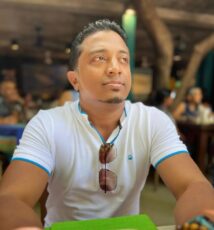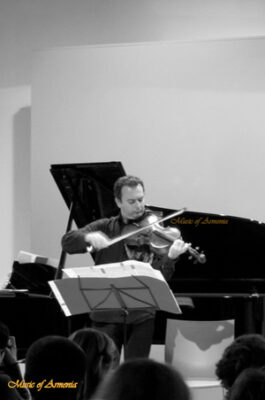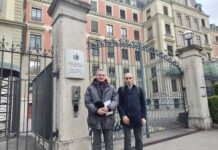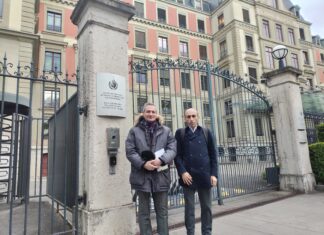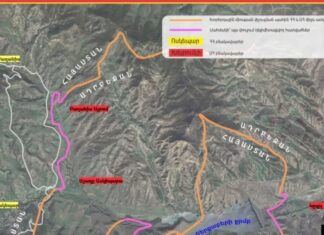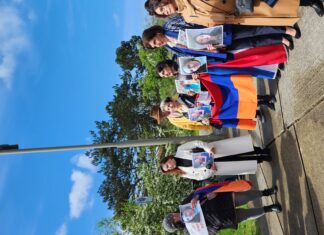YEREVAN-TURIN — Italian musician Maurizio Redegoso Kharitian (born in 1970 in Turin (Torino) to a Genoese singer/guitarist father and a French-Armenian dancer mother) has played various instruments since his childhood (piano, flute, violin). At Torino, Novara and Paris conservatory he studied viola and quartet. He founded a string quartet named after the Swiss composer Arthur Honegger, which win one first prize and three international second prizes. He performed with Orchestra Sinfonica Nazionale della Rai, Orchestra dell’Accademia Nazionale di Santa Cecilia in Rome, European Union Chamber Orchestra, Orchestra of the Bach Akademie Stuttgart, European Music Projet, etc. and soloist with Offerta Musicale Chamber Orchestra of Venice, Ensemble of Orchestra Rai, Orchestra “Stefano Tempia” di Torino. He also has made audio and video recordings for Rai Trade, Decca, Arion, Stradivarius, Real Sound, Nuova Era, Rai, Mediaset, Delta Video.
Maurizio, in your long professional activities, you have played different genres of music: classical, pop, jazz, ethnic, theatrical. Do they complement or clash with each other?
Although I only started studying my first instrument at the age of 10, I was lucky enough to listen a lot of music from different genres as a child because my father had a recording studio at home. I grew up with a variety of sounds and styles with me and that I found again later. Despite having classical training which was very important and which prevailed for a long time, I felt the need to step outside the rigid schemes of the academic world. To enter into the merits of the question, nothing can be totally improvised and research is required for any kind of musical expression that one wishes to address. Personally I am attracted by mixing genres, as long as you have awareness and respect for the origins of each tradition and then undertake the artistic path more in line with your talent.
You have performed the music of Ennio Morricone under the direction of the maestro himself. How was this cooperation?
It happened in 2013, on the occasion of many concerts dedicated to him as a tribute to his enormous career as a film scorer. I was part of the Rai National Symphony Orchestra. It was obviously a very emotional experience to play his fantastic music under his direction and despite his advanced age — he was 86 at the time. He conveyed great attention to every musical detail. I’ve played that repertoire dozens of other times but that circumstance represented a privilege to have received the deep humanity directly from whoever wrote them. Twenty years earlier with another orchestra I had played his “contemporary classical” compositions, very difficult and particular which did not reveal anything of his film style; instead recently I played some chamber music that was then used for some film work.
You also have participated in several editions of Pavarotti & Friends, accompanying the likes of Dionne Warwick, Elton John, Eric Clapton, Caetano Veloso, B. B. King, Lionel Richie and Deep Purple. Are there any special memories connected to those celebrities?
